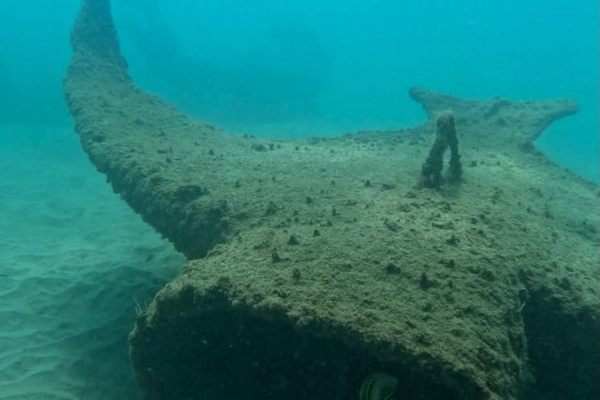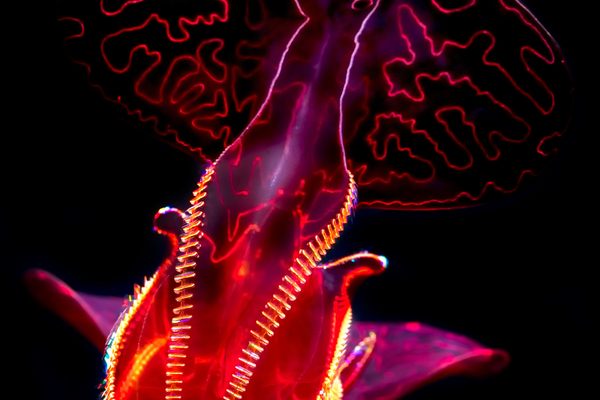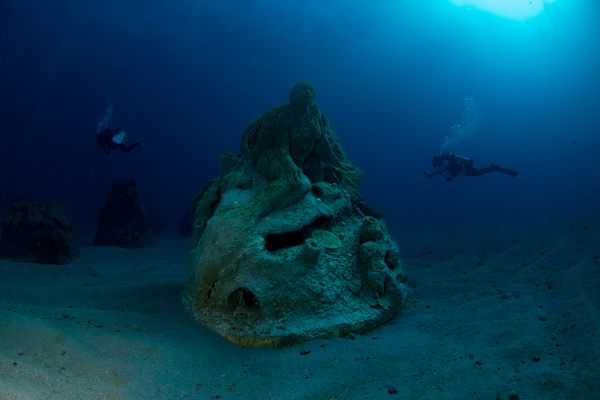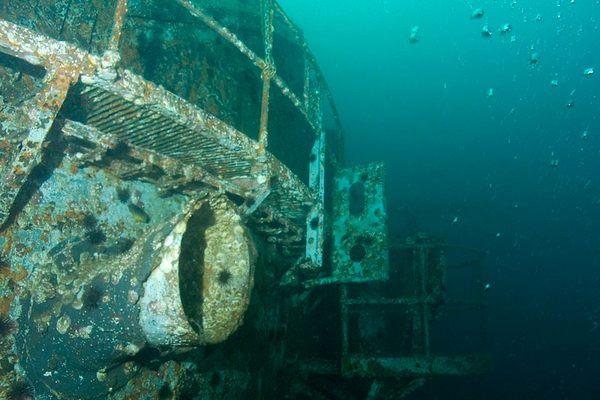About
Précontinent II is the last visible reminder of a series of three French underwater habitats built between 1962 and 1965. Developed by the world-famous oceanography pioneer Jacques-Yves Cousteau, the underwater "village" was supposed to be proof that it's possible for humans to live underwater without interruption for extended periods of time, at increasing depths.
The habitats were also built to explore the underwater world and conduct research for the petrol industry which financed the project. The project was named précontinent for the French word for continental shelf, the edges of a continent that are covered by ocean.
Précontinent I was the word's first underwater habitat, located in the Balearic Sea off coast from Marseille. It was completed in September 1962, two years before the American Sealab project. Two aquanauts, Albert Falco and Claude Wesly, lived in the habitat, a five-meter steel cylinder known as "Diogenes." The habitat was fixed 11 meters under the surface of the water and fed with compressed air. Hot water came through a plastic pipe from a ship, and food in waterproofed containers.
Other "furnishings" included infrared lamps used as heaters, a record player, a radio, three telephones, a video surveillance system, a library, a TV and a bed. In the bottom of the habitat was an airlock, which allowed the two men to exit into the ocean, where they built compounds for fish and studied their behavior, and took measurements for topographical underwater maps.
A year later, Précontinent II was launched about 35 km northeast, near the Sha'ab Rumi (Arabian for "Roman Reef"), off the coast of Port Sudan. The so-called Starfish House lasted for four weeks, housing a group of oceanographers as well as Madame Cousteau and the parrot Claude, who was supposed to warn the aquanauts of possible danger in the air.
A second Précontinent II habitat, the "Deep Cabin"—a smaller version of the one used in Précontinent I—was installed even deeper into the sea, at 27 meters under the surface. Other structures were built including a tool shed and an air-filled hangar containing the Hydrojet Saucer DS-2, a small submarine for two people, which was equipped with three movable outside lamps, two cameras, a radio, a tape recorder and a movable grappler.
The mission was to observe and collect fish and other organisms for exhibition and studies at the Oceanographic Museum in Monaco. Jacques-Yves Cousteau also wanted to prove that it would be more practical to anchor offshore drilling rigs at the bottom of the ocean than to place them above water, as well as prove the existence of a richness of minerals around continental shelfs.
Précontinent III was supposed to start on September 17, 1965. This time the habitat was a dome constructed on a platform, with much-improved technology, and housed several aquanauts including Jacques-Yves Cousteau. However, the launch hit a snag. The habitat had already been brought to the diving place, sealed and put under pressure when the weather turned bad. It was brought back to the harbor where the aquanauts stayed in the habitat and under pressure, waited for the weather to change. Four days later the project was launched in earnest and the habitat anchored 100 meters below the surface, off the coast of Monaco near the Cap Ferrat lighthouse. The project lasted 22 days and its mission was mainly related to oil production—for example, how to assemble a drill head under water.
This was the last mission of the Précontinent series, even though six missions in total were planned. Jacques-Yves Cousteau changed his mind and decided he didn't want to be a part of research for the petrol industry anymore. Instead he dedicated his career to the exploration and protection of the world's oceans from then on.
From the three Précontinent missions only part of Précontinent II remains underwater, and has become the site of many diving tours from Sudan and Egypt. At the anchor place of the habitat you can find the remains of the tool shed, crusted with coral growth, and the fish cages, covered with sponges. A few meters deeper are the shark cages, covered with coral and crustacean, and the hangar, which still stands anchored in the bottom of the ocean, still filled with air and possible to enter.
Related Tags
Know Before You Go
Diving tours can be booked through various sites on the internet.
Published
September 28, 2016
Sources
- https://de.wikipedia.org/wiki/Conshelf
- https://fr.wikipedia.org/wiki/Pr%C3%A9continent_I
- https://fr.wikipedia.org/wiki/Pr%C3%A9continent_II
- https://fr.wikipedia.org/wiki/Pr%C3%A9continent_III
- https://en.wikipedia.org/wiki/Precontinent
- https://en.wikipedia.org/wiki/Jacques_Cousteau
- https://en.wikipedia.org/wiki/Underwater_habitat
- http://cassiopeiasafari.com/precontinent-ii/



















































